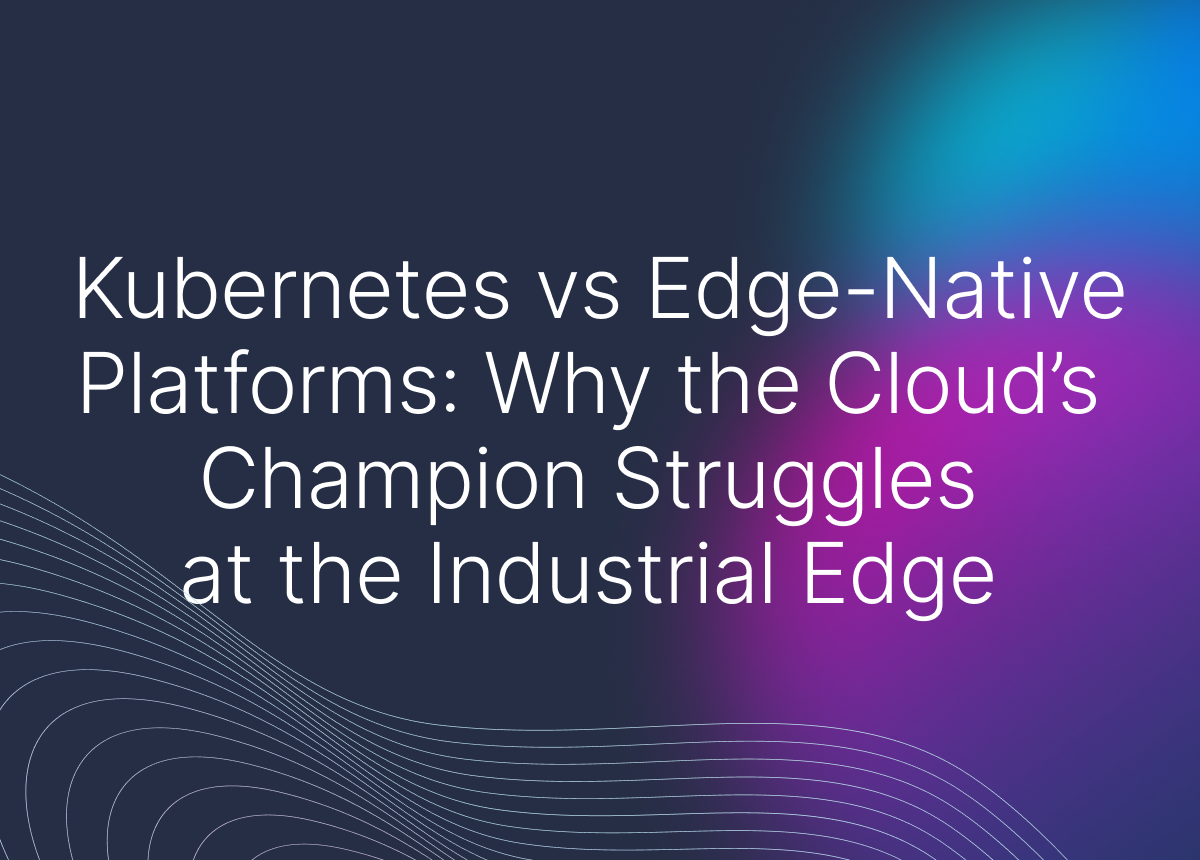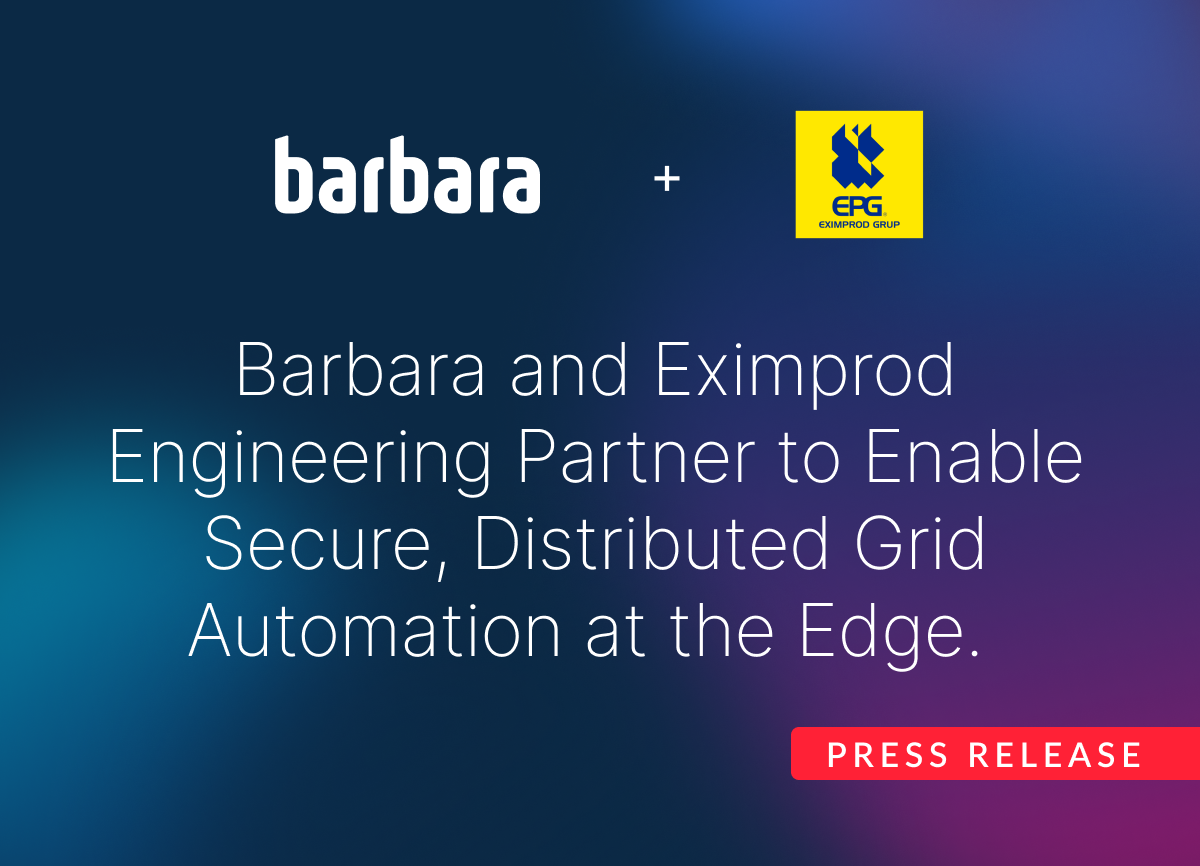Scaling your Industrial Edge Computing Projects with an Edge Management and Orchestration tool
As organizations' appetite for seizing opportunities at the edge grows, data-driven industries must carefully select the right infrastructure to seamlessly scale from initial implementations to large-scale deployments across multiple facilities.This article explores why an Edge Management and Orchestration tool is essential for efficiently and securely scaling edge computing initiatives.
Maximizing Value from Edge Data
The edge isn’t just about data collection, it’s also about on-site analytics. In fact, the next two years are poised to see significant growth in the integration of Artificial Intelligence (AI) into industrial processes: from predictive maintenance to quality control, AI is set to revolutionize every aspect of manufacturing.
Despite the vast data collected by the industry in recent years, less than 25% is ever processed. This is because often enterprises lack the adequate infrastructure to effectively utilize their data.
Renewed Focus on Industrial Edge Computing
The growth of the Internet of Things (IoT) and enterprise adoption of AI, has brought renewed attention to industrial edge computing. In manufacturing, the edge encompasses the production environment where cameras, sensors, machines, and assembly lines generate vast amounts of data. Using edge computing technologies, manufacturers can process this data in real-time directly at the source, enabling faster decision-making and significantly improving operational outcomes.
Edge Computing is essential for the digitization and automation of industry, facilitating real-time remote monitoring, predictive maintenance, and process performance optimization. David Purón CEO at Barbara
.jpg)
Preparing for Scaling your Edge Computing Deployments
The precise nature of edge infrastructure means that when an application fails, or device has issues if you don’t have the infrastructure in place a technician is forced to go to the actual location to make updates or reboot a system which can be very difficult if you are running dozens of edge devices in different locations.
To avoid this costly and time-consuming process, the edge computing infrastructure, whether composed of physical or virtual servers, must be easy to install and manage.
The answer to this problem is to adopt a management platform that allows system administrators or IT personnel to easily deploy, manage, and scale applications across the entire edge infrastructure from one centralized location. These are the so called Edge Management and Orchestration tools.
What is an Edge Management and Orchestration tool?
To effectively manage any edge computing project, companies need a centralized edge management and orchestration tool. This tool handles provisioning, monitoring, configuration management, software updates, and security management across all edge devices and servers.
Because enterprises tend to focus on particular use-case solutions, they often overlook the need for an edge management and orchestration tool when they intend to scale. Such a tool is essential for managing all edge devices and applications as they expand.
Organizations aiming to leverage their edge computing efforts require a robust Edge Device Management and Application Orchestration tool to effectively monitor thousands of edge nodes across multiple locations. David Purón - CEO at Barbara
Barbara Panel for the Remote Management of Applications at the Edge

Barbara Panel is a centralized management tool that facilitates the interaction with edge nodes in the field. It can be accessed using a comprehensive graphical interface or a REST API if it needs to be integrated with other management systems.
Barbara Panel can be installed in any public or private cloud, or even on-premises, and it allows to manage thousands of Edge nodes and orchestrate applications in those through a secure and reliable MQTT broker.
More precisely Barbara Panel offers the following capabilities:
1. EDGE ORCHESTRATOR: to deploy and manage multiple edge applications, both containerized and native, on thousands of edge nodes located anywhere in the world.
2. DEVICE MANAGEMENT: that covers the complete lifecycle of your Edge Nodes remotely: activate, deactivate, upgrade, operate. All while maximizing your long-term uptime and keeping them free of security vulnerabilities.
3. BATCH OPERATIONS: that group your devices hierarchically, design advanced filters, assign tags according to their needs, and operate them in batch, remotely and centrally, with a single click.
When managing thousands of devices deployed in the field, it is essential to be able to operate them in parallel, using batch commands. But the power of one command applied to thousands of devices also brings with it great responsibility. Therefore, it is necessary to preview the actions to be executed, simulate the results before executing the action and restrict these actions to users with sufficient permissions to carry them out
4. EDGE AI: to harness the power of AIoT and take the automation of systems and business processes to another level
5. EDGE DATA ANALYTICS: to store, visualize, and process any data on the Edge, or in hybrid Edge/Cloud architectures. Your data is always ready to add value to your business.
6. VPN: that connect all your devices to a single virtual network. Improve your development and maintenance processes without compromising your security.
7. TELEMETRY AND ALERTS: to monitor the health of the Edge and stay ahead of problems to ensure system continuity.
8. CLOUD CONNECTIVITY: to easily integrate with any Cloud. Barbara is compatible with leading providers such as Amazon Web Services or Microsoft Azure.
9. BUSINESS INTEGRATON: you can deploy edge services and integrate them seamlessly with your enterprise systems.
Final Notes
As with any new IT initiative, getting the full benefits of edge computing requires careful planning. Companies must design an Edge Computing Infrastructure that not only meets current needs but is also takes into account future use cases and deployments.
Despite the critical role of edge computing in digital transformation, many organizations still focus on isolated use cases without a comprehensive strategy and an infrastructure. One solution is to collaborate with experienced partners like Barbara that provide the edge infrastructure to accelerate industries´ digital transformation and the transition to AI.
About Barbara
Barbara is the Edge AI Orchestration Platform for organisations seeking to overcome the challenges of deploying AI in highly distributed environments.
Barbara empowers OT managers with IT capabilities to digitize processes, enabling seamless data capture, processing, and real-time decision-making.
With Barbara, companies can deploy and monitor AI models in minutes by simply exporting and uploading them to the platform.
Digitization teams need efficient AI orchestration, while infrastructure teams require secure modernization without disrupting existing systems. Barbara enables both, orchestrating AI applications across distributed locations, modernizing infrastructure, and ensuring security, all without replacing existing components.
Our capabilities include:
- Industrial Connectors for legacy or next-generation equipment.
- Edge Orchestration to deploy and control docker-based applications across thousands of distributed locations.
- Edge MLOps, to optimize, deploy, and monitor trained models using standard or GPU enabled hardware.
- Remote Fleet Management for provisioning, configuration and updates of edge devices.
- Marketplace of Certified Edge Apps ready to be deployed.
Contact us to discuss how we can help accelerate your Edge AI projects.

Figure description: From Edge Nodes, Barbara can communicate with different industrial machines and run AI applications or algorithms on the Edge node itself. These applications and algorithms can be created by the user or purchased from Barbara Marketplace, our marketplace in the cloud. The management of both, edge nodes and e applications running on them is managed by Barbara Panel, the Edge Management and Orchestration tool for AI deployments at the Edge.



.png)





